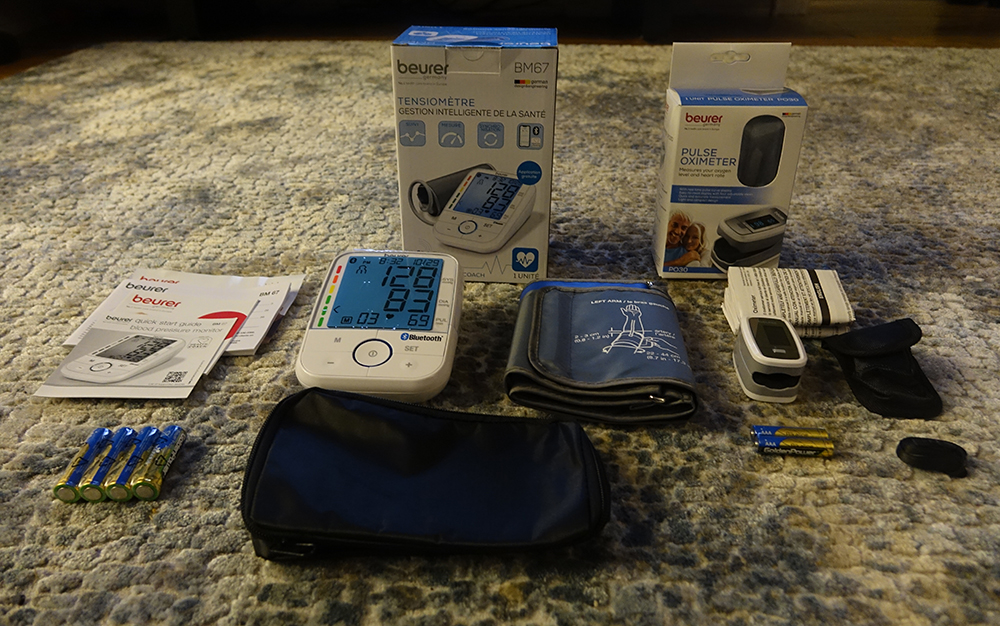
When it comes to keeping track of your health and wellness at home, it’s about far more than just daily step counts and weight. Now, we want to know our 24/7 heart rate, how much sleep we get each night, and even how we manage stress. Part and parcel with that is blood pressure and pulse. And the Beurer BM67 blood pressure monitor and PO30 pulse oximeter can be used to measure those stats. So, we were excited to have the chance to try them out.
What are blood pressure and pulse oximeter measurements?
First off, what is the purpose of using a blood pressure and pulse oximeter in the first place?
A blood pressure reading, usually done through a wrap around your upper arm, measures your systolic (how much pressure your blood exerts against the walls of your arteries when the heart beats) and diastolic (how much pressure is exerted while the heart rests between beats) blood pressure to help determine if you suffer from issues like high blood pressure (hypertension). A normal systolic number (the number that appears on the top) is under 120 and a normal diastolic number (the number on the bottom) is less than 80. A systolic number between 120 and 129 means your blood pressure is elevated but there might not be cause for concern; 130-139 means stage 1 hypertension, 140 or higher is stage two, and higher than 180 is a hypertensive crisis. (Note: always consult with your doctor if there’s cause for concern).
While a blood pressure monitor looks at the performance of your heart and how hard it needs to work day-to-day, a pulse oximeter looks at your lung function. Ideal for those who suffer from shortness of breath or have a known lung or heart condition, this device, which usually captures a measurement through your finger, determines how much saturation of oxygen is carried in your red blood cells. A saturation number over at least 90% is considered good.
Beurer BM67 blood pressure monitor
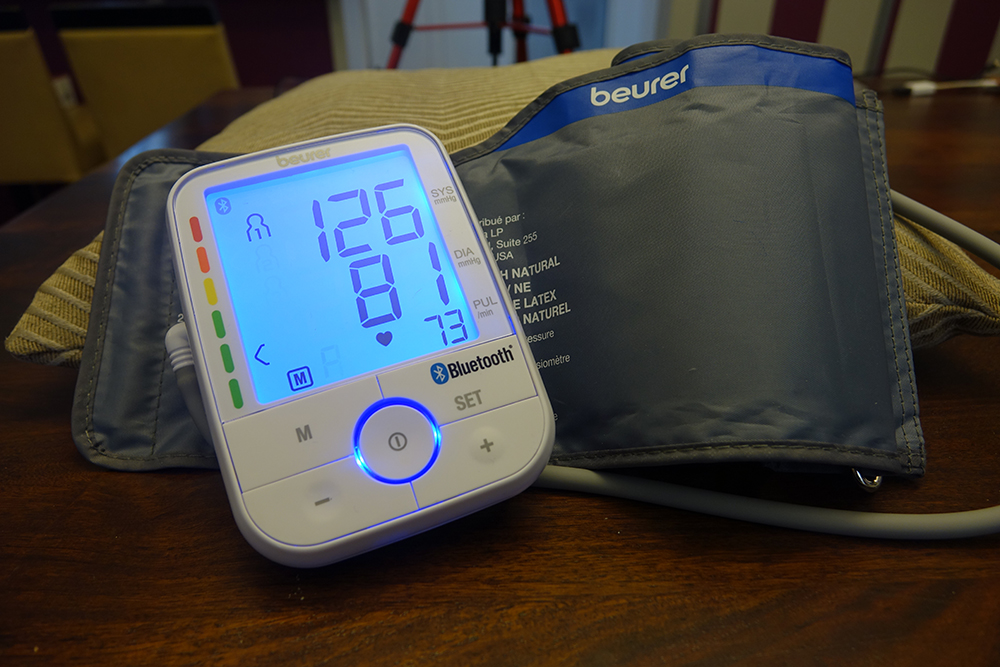
The BM67 blood pressure monitor is a unit similar in size to a video baby monitor with an oversized screen. It connects via a cord to a band that goes around your arm.
Insert the batteries, go through the simple process to set the date and time, and you could theoretically be ready to go. But this device works with a partner smartphone app to keep track of historical data, from both the BM67 and other compatible Beurer devices, which is a feature worth taking advantage of. (More on this later).
The unit itself has a large screen that display all of the readings along with four function buttons: set, memory, and “-” and “+” for navigating the menus when selecting a user, for example, or setting the date and time. In the middle is a circular button for selecting an option or initiating a reading. Press the centre button with the armband in place once you’re ready to go, and it will commence within seconds.
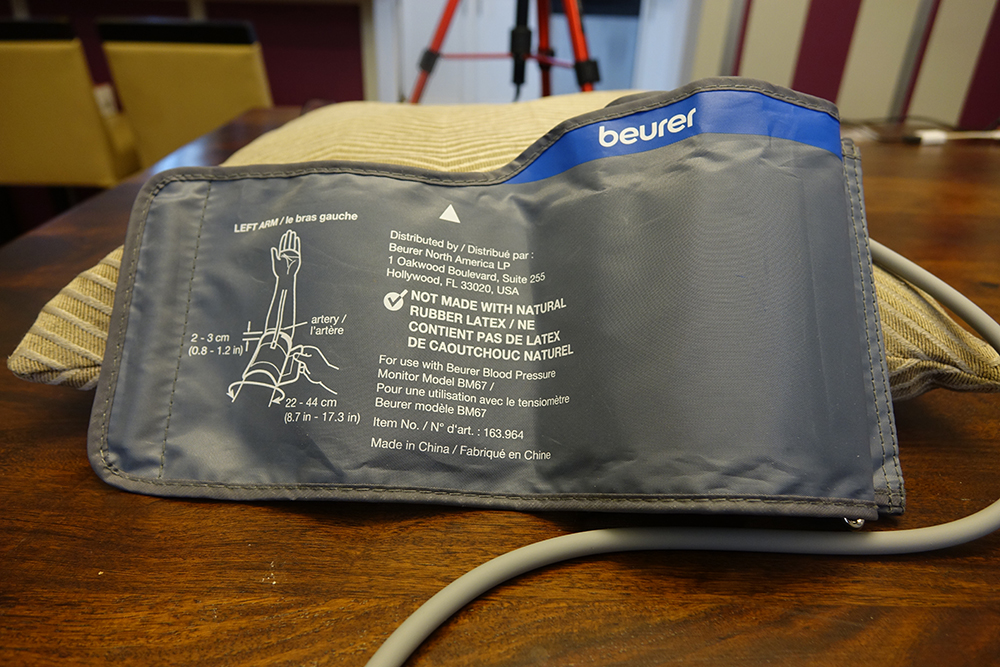
The armband wraps around your arm using Velcro then connects to the unit via a long cord. It’s critical that the armband is positioned properly or you’ll get an error code. (I tried once to get a quick reading without taking the time and it wouldn’t work.)
It comes with a convenient zippered storage and carrying case.
Using the Beurer BM67 blood pressure monitor
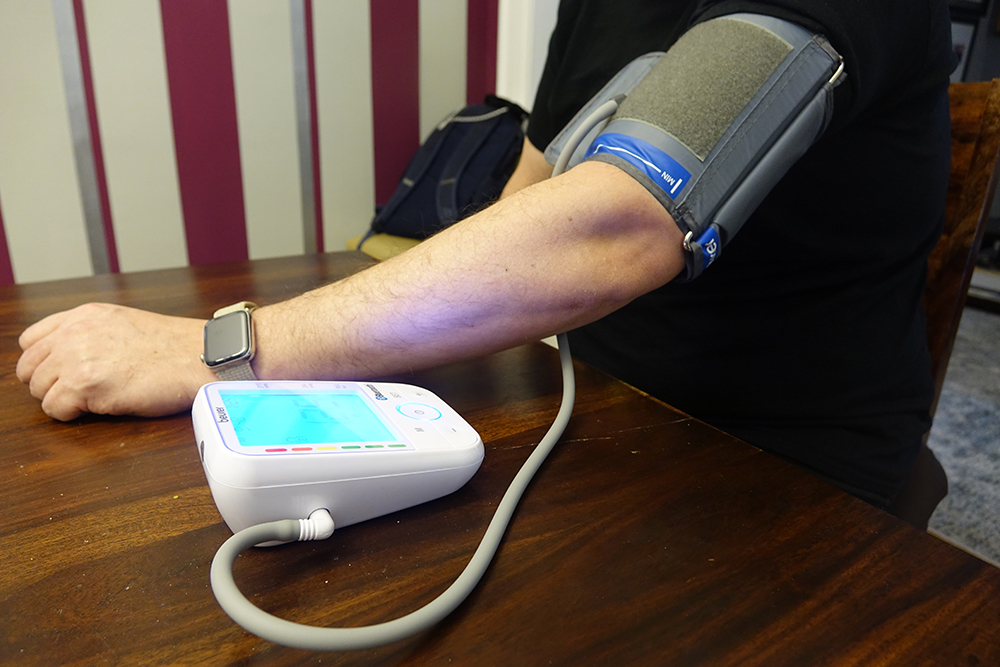
Download the Beurer Health Coach app, sign up and/or register, enter your birthday, height, and gender (required even if you want to sign on as a guest), then select the device you want to pair. This process was confusing at first as it appears like the four large numbers that appear on the unit’s screen is the pairing code, but after checking the manual when it wouldn’t work, I discovered that it’s actually a six-digit pairing code. The first two numbers show up smaller on the top, left of the screen, and are easy to miss or disregard as something else. Once I figured this out, pairing worked without a hitch. If you keep Bluetooth on, the captured data automatically transfers to your phone every time you take a measurement. Keep in mind, however, that having Bluetooth on at all times will drain the batteries more quickly. But it uses four easily replaceable AAs.
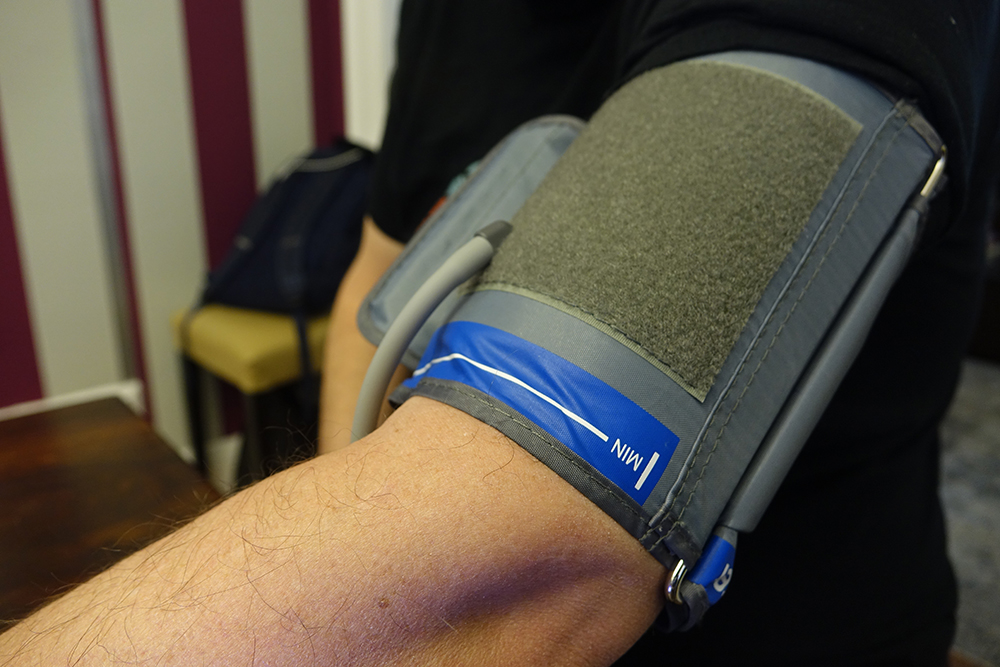
Wrap the armband around your left arm, leaving enough space to fit two fingers lying flat between the strap and your arm. This is important as if you secure it too tightly, it can hurt as the band tightens around your arm. Make sure to position it on your bare arm (roll your sleeves up all the way) about an inch above your elbow, keeping the tube in line with the centre of your palm.
Rest prior to taking a measurement, and do not eat, smoke, or do anything strenuous beforehand (don’t take a measurement right after working out, for example!) Sit down with your legs uncrossed, feet on the floor then take the measurement. It takes about 30-45 seconds to get a reading as the band squeezes around your arm. You’ll feel a little tingle in your fingers as well. The measurement will display on the screen with the systolic number at the top and diastolic at the bottom. You’ll also see a PUL/min number that advises how many times your heart beats per minute and a tiny heart symbol that will either be on its own or with a chart symbol suggesting that an irregular heartbeat was detected.
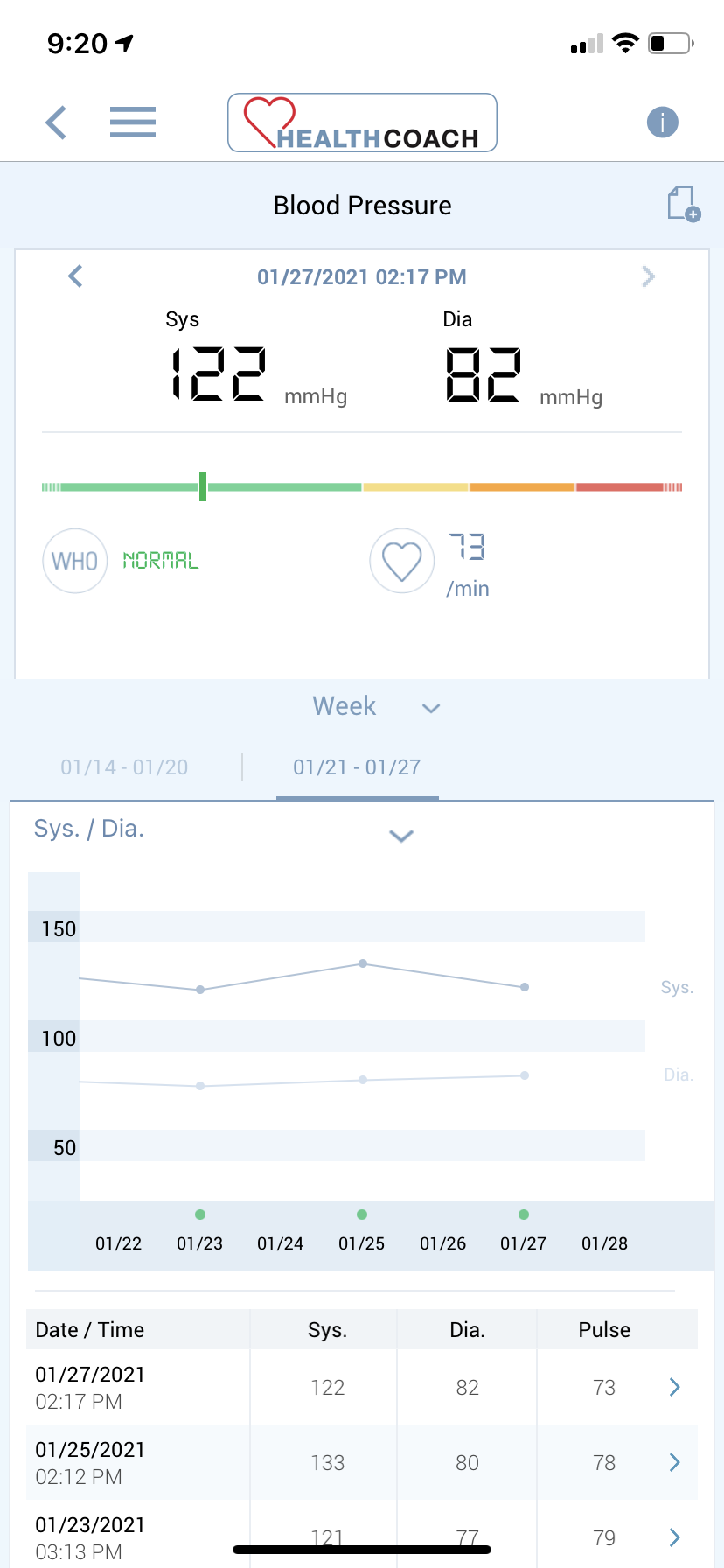
View all of the captured information in the app, allowing you to scroll through day by day or see a line list of measurements as well as a graph of how your blood pressure has changed over time. The app isn’t the most user-friendly I’ve encountered, but in terms of providing a holistic look at your health, it’s worth downloading, especially if you plan to get other Beurer products as well, like the smart scale (which I’ll also be reviewing).
You can theoretically set up multiple users to track up to four people in the family in the device’s memory, which can hold up to 30 entries per person. However, I couldn’t figure out a way to set up multiple profiles in the app – all the data shows up in one view. The manual also suggests only using the armband on one person. Thus, if you get this armband for yourself, but your spouse or parents want to try it out from time to time, you can simply toggle to the User 2, 3, or 4 to capture their data separately, then manually remove the reading from the app or turn Bluetooth off so it doesn’t sync.
PO30 pulse oximeter
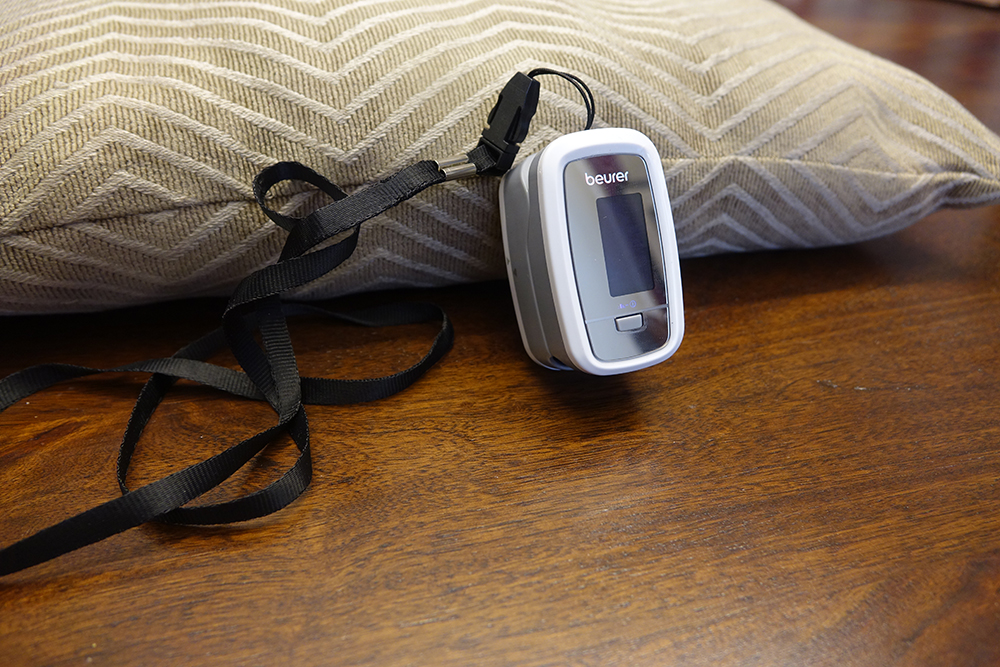
The PO30 pulse oximeter comes with a cute carrying case and wrist strap. The tiny unit is powered by two AAA batteries that should last a few years before they need replacing.
It’s blazingly simple to use: turn it on by pressing the button, stick your index finger inside, then wait. After about 10 seconds, a reading will show up on the screen. Sp02 displays as a percentage, which indicates, as noted, your arterial oxygen saturation. Under that is a PR bpm number, which indicates your pulse beats per minute.
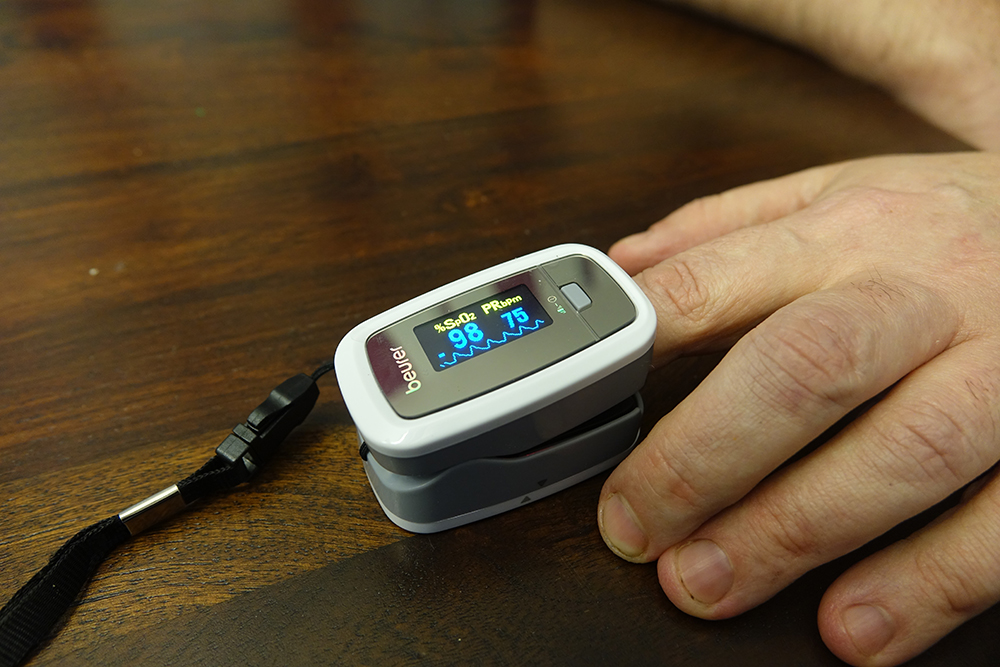
As noted, a reading anywhere from 95-100% is normal. A below normal reading of below 95% could be hypoxemia, which means low oxygen levels, which can lead to complications, like shortness of breath, chest pain, confusion, headache, and rapid heartbeat. Note, however, that for people with chronic lung conditions or diseases, like COPD, a normal number might be different. Regardless of your condition, it’s always wise to consult with a doctor if there’s a cause for concern.
It doesn’t get any easier than a device like this one, which you can easily throw into your purse in the included Velcro carrying case or hang around your neck with the included strap. The only thing this device is missing is app support to keep track of the historical data over time – it would have been nice to have been able to keep this data in the Health Coach app as well.
Are the Beurer BM67 blood pressure monitor & PO30 pulse oximeter worth getting?
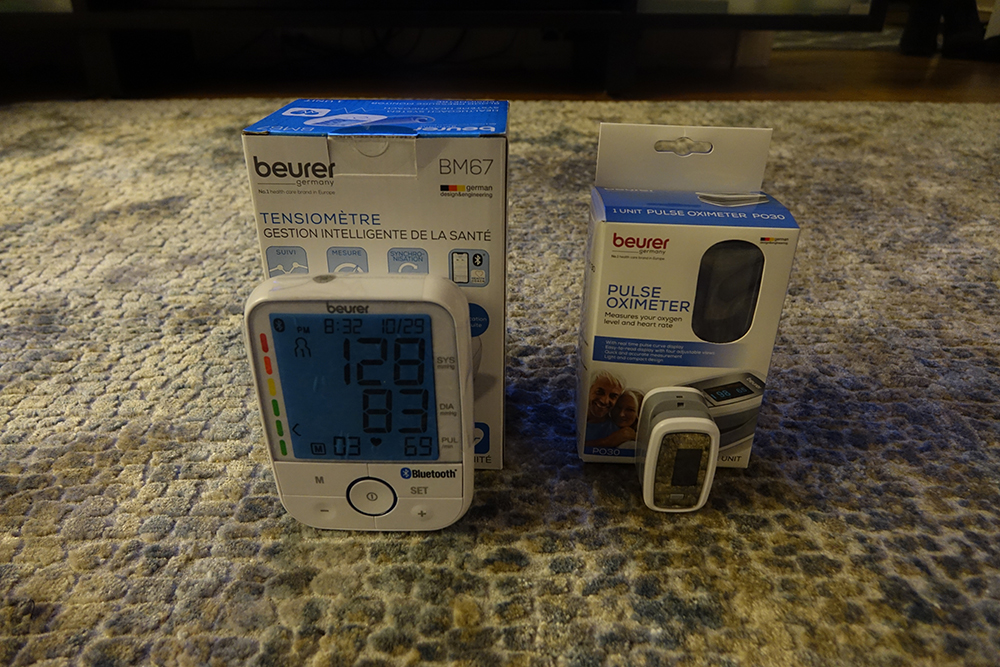
Both of these devices were pretty easy to set up and use and would come in handy for anyone who is concerned about blood pressure and/or lung function, or just wants to keep an eye on both. Take measurements and keep track to provide details to your doctor at your next visit or book an appointment should you notice an irregularity. The Health Coach app isn’t the most intuitive I’ve seen and it takes some getting used to. But it’s valuable in providing an at-a-glance look at how your blood pressure changes from day to day so you can pinpoint issues that might be impacting rises, or discover unexplained ones.
The Beurer BM67 blood pressure monitor and Beurer P030 pulse oximeter are great devices to keep at home to keep track of your vitals and help stay on top of your health and wellness.



